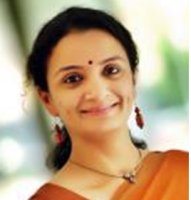 |
  |
 |
  |
In response to TM Krishna's article - Ramaa Venugopalan e-mail: ramaa17@gmail.com September 20, 2020 ('The guru-shishya structure is inherently prone to abuse. It needs to be demolished' T.M. Krishna writes: The guru-shishya relationship in Indian music is grounded not just in a power imbalance, but in a celebration of inequality, which makes it vulnerable to abuse, which is then romanticised. indianexpress.com/article) My response to T.M. Krishna's article in the Indian Express dated Sept 19, 2020 On this 'one' account I agree with his thoughts. At least he has the guts to consistently call out and speak about this issue. What is pertinent is the last line in this article (because enough has been said about the other aspects he addresses). "In the guru-shishya parampara of Indian "classical" music and dance, rarely can a shishya stand up against her or his guru and hope to survive another day." First off, to call a teacher imparting arts a Guru is problematic for me. As he says let's just address it as domain experts. The power play comes mostly in teachers who are performers themselves. When one is a popular performer, the adulation is beyond comprehension. Calling them deities, Gods and Goddesses of the art form... whatever else, is the problem. By practicing a performing art form, one cannot by default become divine. Two, a student who ventures or seeks to learn from such a star without doubt wants to imbibe those qualities to make them the next God or Goddess and also garner the popularity and opportunities that catapult them into that position. This is the truth! It's transactional in that sense. He talks about defying the Guru. Yes, many students defy, but only where it's necessary. It's still okay to put up with it because if one doesn't, one just slips off a few rungs from the ladder. Now who determines whether that is worth their time or not? What system? We the teachers, students and organisers constitute the system. It is not an arbitrary notion or a concept that exists in air. It is made by us, the stakeholders. And who defies the system? Who makes the changes? Who encourages the adulation? Who sets precedence for such behaviour? Who brushes such behaviour under the carpet? Who takes it on looking at the bright end of the tunnels that promises fame? When we begin to think the system is outside of us, then we are only talking about the problem, never the solution. Because we are the solution. A teacher of art is skilled, an expert, but only another human being. A relationship with such a person is as complicated or as simple as a bond with another human being. And beyond a point, every teacher can only teach that much. So the point of "only art that only this teacher can teach me" is bunkum. Case in point is the multiple workshops everybody is conducting and every student is busy hopping on. Now let's not draw a parallel to the thousands of deities that give thousands of different compartmentalized blessings. It's lame. After a point, the teacher is another rung in the ladder to climb. And the teacher equally rides on the students' popularity too. If anything, it's symbiotic in nature. Never single dimensional. This is my personal observation and experience. The art world need not break the notions of parampara. It is a respectable, unique tradition just like any other system of imparting knowledge. The focus must be the art form. Not the person. And if one does compulsively use the divinity theorem, we are all divine. So there! That's a leveler, isn't it? Of sorts! In the spiritual journey, the Guru opens up pathways to the higher knowledge. In art, the teacher shows the possibilities in art to the students. That is all. These walls and notions must break. Abuse must stop. Any teacher who threatens that the student will not move ahead without their support is bunkum. And it's a lie. Period. And a call for teachers too. When these walls break, our delusions will break too. So we might have to fall down a few floors from divinity to being sore, hurt human beings. At that stage, the art that we wield as a weapon may not come in very handy. So it helps to treat students better, as human beings and keeping it simple, uncomplicated and objective. Often times, it's pragmatic to focus on being a decent human being than a God or a Goddess incarnate in art. They have higher and more difficult jobs. Thankfully, our job is way simple.  Ramaa Venugopalan is a performer and teacher of Bharatanatyam from Bangalore, for a little over three decades. She pens her thoughts about dance regularly for leading portals. Post your comments Pl provide your name and email id along with your comment. All appropriate comments posted with name and email id in the blog will also be featured in the site. |